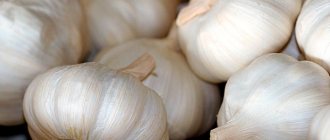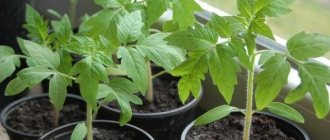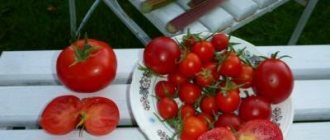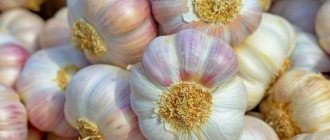How to care for culture
Consistent and proper care of the seedlings determines the proper cultivation of cilantro (coriander).
In order to grow a spicy crop as quickly as possible, you should water the plants promptly and regularly. 2 times a week will be enough. Approximate norm per 1 sq. meter - 4-5 liters. It is especially important to water grass growing in open ground during its growing season so that the green mass is gained faster. When the cilantro fruits begin to ripen, it is recommended to reduce watering to 2-3 liters applied per square meter. If you are unable to provide regular watering to the plants in your garden bed, you can use mulching.
By mulching the soil tightly around the cilantro bushes, you will ensure that moisture is retained in the soil. This culture is very light-loving. To obtain fragrant and spicy herbs as a result of growing, as well as high-quality seeds, you need to choose sunny areas.
When growing cilantro indoors, it will require simpler care. It consists of regular moderate watering. And also in the backlight, as written earlier.
Specifics of caring for cilantro in open ground
Of course, to get a good harvest in the fall, it is not enough just to plant a plant. You also need to know exactly everything about coriander - planting and care in open ground. Still, although this is not a whimsical crop, it still needs some care. Otherwise, you will not get a rich harvest, but a few stunted, barely alive sprouts that miraculously survived the attack of insect pests. So, it will be useful to tell you in more detail about how to grow cilantro.
Watering
Of course, the basis for caring for any garden crop is watering. Therefore, the story of how to grow cilantro in the garden should begin with it.
In general, too much watering is not necessary. If it rains moderately heavily at least once a week, then you can generally do without additional moisture - cilantro will grow well anyway.
If the year turns out to be dry, then after sowing cilantro in open ground in the spring, you will have to water it. But you don’t need a lot of water in this case either - during the collection of green mass, about 4 liters of water should be poured per square liter.
Attention! Watering frequency is approximately 2-3 times a week, depending on the ambient temperature.
Later, when most of the leaves have already been collected and the plant has entered the seed ripening phase, watering must be further reduced - water the cilantro once every three days, spending only 2 liters per square meter. This is enough for the seeds to ripen and be collected for later use.
Top dressing
To finally understand how to plant coriander and care for it, you need to understand the application of fertilizers. In general, this plant is valued for its green mass - it is also eaten and harvested. To increase its quantity, you need to provide coriander with a sufficient amount of nitrogen - this is what is needed for the formation of new leaves.
As already mentioned, it is advisable to add humus to the ground before planting. Usually this is enough for the cilantro to produce a bountiful harvest several times. But on sandy and depleted soils, additional fertilizing may be required. Of course, it must be nitrogen. An herbal infusion is best. To do this, you need to take any weeds (nettles and dandelions are best) and fill them with water. The optimal proportion is 1:4. After this, the container must be left in the sun for the fermentation process to start.
Important! Cilantro can be grown on a windowsill, but you will have to use artificial lighting.
After a week, most of the herb will rot and practically dissolve into the infusion. It must be diluted with water in a ratio of 1:10. The resulting solution can be used to feed cilantro after each harvest. Organic nitrogen fertilizing will speed up plant growth and produce more greenery.
Description and varieties of crops
Cilantro or coriander is an annual spice with a strong characteristic odor. Herbs and seeds are used as seasoning. The aroma of the leaves is specific and not everyone likes it; the seeds have pleasant fresh notes and have many more fans.
Coriander blooms in July - early August with white small flowers collected in inflorescences - umbrellas. They bear round, dense fruits. They start out green and turn dark brown when ripe. Cilantro is propagated by seeds.
Popular varieties of cilantro:
- "Amber". Popular, early ripening, easy to grow, produces a good harvest of greens. Emerges 2 weeks after planting, ready for cutting a month after germination.
- "Vanguard". Mid-season, ready for cutting in 40–42 days. It is characterized by low growth and a strong aroma. Can be planted at home.
- "Borodinsky". Early ripening, up to 75 cm high. Its value when grown from seeds is the possibility of early sowing. Plants tolerate cold temperatures down to –1 °C.
- "Venus". Late-ripening, compact bush. For vegetable use (for greens), the aroma is delicate.
You can plant cilantro not only outside, but also at home on the windowsill. The plant is unpretentious, but grows poorly in low light. Therefore, in winter, illumination with a fluorescent lamp is required.
Watch a gardening program about this crop:
Greenhouse
Growing cilantro requires a lot of light and high humidity.
Any greenhouse is suitable for organizing the process of growing cilantro. This crop can be grown either separately or as an intermediate plant, planted between the beds of another crop. To be able to grow cilantro throughout the year, the greenhouse must have a competent heating system.
This culture belongs to the category of “long daylight” plants. To obtain good harvests, additional lighting is necessary. Also, cilantro is a moisture-loving plant, so the greenhouse must be equipped with a well-thought-out water supply system for watering the soil. To grow this crop, you can use a shelving system with boxes or pots.
Conditions for growing
Cilantro can successfully germinate with other types of greens, tomatoes, peppers, eggplants and zucchini, even at close distances from each other. To successfully grow it, comply with the following requirements:
- it should be located in the light, so that there are no tall buildings or tall trees nearby that create shadow;
- it is more convenient to grow it on racks, while creating lighting for each tier;
- if you grow cilantro all year round, the greenhouse should be covered with double plastic film, tempered glass or polycarbonate;
- it is recommended that it be equipped with a heating system in winter and equipped with vents for ventilation in summer;
- In winter, install a double door to prevent the cold from entering.
For convenience, an automatic drip irrigation system can be installed in the greenhouse, which irrigates the vegetation at a given time interval. This is especially convenient when growing a large crop for sale. Another convenient function is climate control; it is convenient to monitor air temperature and humidity levels.
Landing
Sow them in rows. For every m2 2-3g of seeds are consumed. They are planted to a depth of 2 cm. The distance between the rows should be 12 cm. After 20 days, the first shoots will hatch
At this time, you should get rid of weeds with great care, as their presence has a detrimental effect on the growth and development of the plant.
In open ground, seeds are planted at home during the entire warm season, but for a greenhouse a different technology is used. The sowing process is completely simple; no special equipment is needed for it. Coriander can even reproduce by self-sowing.
For sowing you only need:
- prepare and cultivate the soil;
- pour water over it;
- and sow the seeds.
Sowing seeds can be done in rows, or scattered and covered with dry soil. Sometimes it is enough to throw a handful of coriander seeds in bulk and plant them in the soil. After a while you can get decent cilantro bushes. As you can see, the plant is not capricious and viable and can even grow on a windowsill.
How to grow coriander (cilantro) all year round [Country House]
Reviews:
kykysyakykysya
writes: I didn’t know that I needed to split the seeds. Thank you! It’s very interesting to make a video, I can’t do it like that...
Marta Kopulova
writes: Thanks for the video. The compost is amazing.
Senor Tomato
writes: is it really that easy? the soil is probably very good...
kykysyakykysya
writes: I didn’t know that I needed to split the seeds. Thank you! It’s very interesting to make a video, I can’t do it like that...
Marta Kopulova
writes: Thanks for the video. The compost is amazing.
Greenhouse construction
When building a warm greenhouse, it is better to use durable and thermally insulating materials. There are three possible options:
- Polycarbonate. This material has many significant advantages. Firstly, it allows the sun's rays to pass through. Secondly, the construction of such a structure does not require the construction of a foundation, which significantly reduces construction costs. However, polycarbonate itself is considered a rather expensive material.
- Polyethylene. The main and only advantage of this material is its cost. The disadvantages are low throughput (vegetables grow slowly) and low strength. The polyethylene structure has to be repaired almost every year.
- Glass. Glass structures are very expensive. But there are many advantages: excellent throughput, long service life and the ability to use the structure all year round.
You can read detailed information about this type of business, such as growing flowers in a greenhouse, here.
Cilantro leaf description
Cilantro leaves are not uniform along the stem. The lower ones have petioles, and the leaves at the top sit directly on the stem; the latter have a slightly elongated shape. The flowers are collected in an umbrella, small. There are pink and white flowers. The main stem of cilantro ends in a central umbrella, from which flowering begins. Other umbrellas bloom after them, blooming at the same time. It is better to remove the leaves when the cilantro is in the rosette phase (about 15-20 cm high). After cutting, it is recommended to feed the plant. Caring for cilantro is not at all difficult: weeding and watering once every 8-10 days. This method of watering is recommended in dry times; if the humidity is sufficient, then there is no need to water the cilantro.
Growing
Cilantro sown directly into greenhouse soil germinates successfully at temperatures no higher than + 20 ºC. If the crop is grown separately, sowing in rows is preferable. When sown with other vegetables, the seed material is scattered in free space without being buried. The soil should be loosened, moistened and lightly sprinkled with dry soil. This method significantly accelerates germination and shortens the growing season. With the appearance of sprouts, the plants are thinned out, with weak shoots being culled, at a distance of 6–8 cm. Seed sowing is carried out year-round.
Insulated structures allow you to grow cilantro in the winter - in January and February. On hot summer days, the growth of cilantro stops, the taste becomes inexpressive, and there is a risk of dropping flower stalks.
Cutting of the leaf mass begins when the growth reaches 15–20 cm, until the release of peduncles, which contribute to the coarsening of the greens and deterioration of taste. It is recommended to cut cilantro in the morning with a sharp knife. After which, the soil is loosened and fertilized for subsequent reseeding of greenery.
Spinach: a useful guest in the greenhouse
Spinach is a tasty and healthy crop. The leaves of the plant contain iron and a whole complex of vitamins; they can be consumed fresh, used for preparing soups, salads, side dishes, sauces and other dishes.
You can grow spinach in a winter greenhouse or an unheated greenhouse. The culture is cold-tolerant, seedlings appear at a temperature of 2°C-3°C. The plant can withstand short-term frosts and does not like excessive heat.
How to grow greens in a greenhouse in winter? It is better to propagate spinach using the seedless method, sowing pre-soaked seeds. Seeds are planted in a heated greenhouse in early autumn, the next sowing is carried out closer to mid-winter. In greenhouses, the plant is planted in early spring, when the soil has warmed up a little. In the summer, plants feel great in open beds.
The seeds are sown in rows, the distance between the lines is about 45 cm. The sowing can be quite dense; as the greens grow, they are thinned out at least 2 times. The first leaves can be eaten; they are very rich in vitamins.
Caring for and growing spinach in a greenhouse is not a difficult process. Plantings require weekly watering with warm water and frequent loosening. Plants do not like excessive humidity, so it is recommended to ventilate the greenhouse frequently. A one-time fertilizing with a complete complex fertilizer is recommended.
When cutting, it is important not to injure the growth point located in the center of the bush. Cleaning of fresh leaves is carried out every 2-3 weeks
After 3 months, the plant stretches and enters the stage of formation of peduncles. It is recommended to dig up the bushes and update the soil. Then new seeds are sown and the cycle repeats.
Growing greens in a greenhouse is suitable for beginner gardeners. It is not only profitable and simple, but also very interesting. Having mastered the agricultural techniques of simple crops, you can move on to more original plants: a variety of herbs.
Please advise how to properly grow dill, cilantro and lettuce in a winter greenhouse?
Question from our subscriber Alexander:
I have a question. I have a winter greenhouse and cannot find seeds of dill, cilantro, or lettuce. Everything grows differently. Or maybe there are other reasons? Help with knowledge. Thank you.
Marianna Latypova, Kazan
I think it’s not the varieties or seeds that are to blame, but the wrong agricultural practices. The winter greenhouse is a special “state” with its own laws. To the main problems of plants - lack of heat, light, cold drafts, etc., other problems are added: short daylight hours. sharp changes in day and night temperatures and a period of rest in plants, when many physiological processes slow down or even stop altogether. Forcing plants to vegetate at this time is a disastrous business! I advise you to carefully study the specialized literature; you can’t explain everything in a nutshell.
Vasily, Kostroma
What is your light zone? What kind of winter greenhouse do you have - area, design - old hangar, anthracite or new? What kind of crop do you have - lettuce line, pots or in the soil? Would you like to see a photo to see what's wrong? The question is complex, and cannot be explained in just a few words or with fingers. You have a desire and I will share my knowledge. But you need to know what to start from.
Tatyana, Orel
Of course, photos in the studio!
I only have radishes and onions growing in my winter greenhouse! salad only watercress. and by the way, a lot depends on the seeds! Before buying, read how the variety behaves in shading!
Vasily, Kostroma
In November, December and half of January, without additional lighting in the middle zone, you can grow only one feather on a feather.
7dach.ru
Growing cilantro (rural business)
There is a type of business idea that will never become outdated or lose its relevance. They are not afraid of competition and seasonal failures, and large initial investments are not an obstacle. Growing greens at home falls into this category.
There is a type of business idea that will never become outdated or lose its relevance. They are not afraid of competition and seasonal failures, and large initial investments are not an obstacle. Growing greens, such as CILANTRO at home, is just in this category.
Perhaps, for some, such a business idea will not seem profitable enough, but if you take a closer look, you will notice ample opportunities for further development, and many will enjoy stable, albeit small, earnings without management and obligations.
Beginners of such a home business should pay attention first of all to onions, because they can grow both in the ground and in water. And one package will cost you only 10-15 rubles
If we take a couple of dozen packages at once, it will cost us 100-300 rubles. On holidays, such as New Year's Eve, onion prices will be even higher than all starting salaries, from 300 to 500 rubles. That is, profit is visible to the naked eye.
In addition to onions, you can start by growing watercress (grows to a suitable size in just two weeks), parsley or celery.
If you take the issue seriously, then the costs of starting a business will be in the region of 500 to a couple of thousand rubles, but the profit can reach 15 thousand. The main thing in such a business is hard work and the desire to work. Then the income will not be long in coming.
What do you need for business?
You may be interested in:
To start a business growing cilantro in a greenhouse in winter, draw up a business plan. It consists of several important points:
- Grade. Analyze whether such a business will really be profitable in the region, and where it will be possible to sell the products.
- Knowledge. Study information about the features of growing cilantro in the region where production is planned, the features of caring for it, collecting and storing it.
- Search for clients. To prevent the business from becoming unprofitable, find potential buyers and negotiate the terms of the deal with them.
The advantages of such a business include the constant demand for greens, its rapid growth and ease of care. But there are also disadvantages. For example, in the cold season, a high-quality greenhouse with a heating system is required, so you will have to spend a lot of money. But, if the demand is high, the costs will quickly pay off.
On a note!
The shelf life of cilantro after cutting is only 2 days. Therefore, take care of delivering the goods to the client as quickly as possible in order to provide a high-quality product.
The most unprofitable business is selling greens to resellers; you won’t earn much from this. If you are planning mass production, then agree on the sale of products with representatives of cafes, restaurants and shops. But, for this, prepare documents for the greens and draw up an agreement.
Counting expenses
It is profitable to grow cilantro in the southern regions of the country, where winters are not frosty and daylight hours are long. The largest expense will be required to purchase a greenhouse. The cost of a reliable shelter with a heating system can range from 200 to 500 thousand rubles, depending on the size and additional functions. To start a business you will also need to purchase:
- boxes for seedlings;
- soil and fertilizing;
- seeds;
- inventory and equipment for ease of work.
To create a business, you may need to purchase land or hire a hired worker to care for the plant. If the business is official, then additional funds will be required for its registration and annual payment of taxes. Large costs will be needed for electricity, they can range from 75 to 90 thousand per year. Opening a business will require more than a million rubles, taking into account its registration, so it is reasonable to open it only if its profitability exceeds 20% annually.
Income calculation
On the market, a kilogram of fresh coriander or cilantro costs from 50 to 70 rubles. Accordingly, income directly depends on the amount of greens grown. To determine it, do a few simple arithmetic operations:
- About 2 kilograms of greenery comes out of a square meter of land. 60 squares will yield 120 kilograms.
- All that remains is to multiply this amount by 50 rubles for the wholesale sale of cilantro, you get 6,000 rubles per month.
The annual income from the sale of cilantro from a greenhouse with an area of 60 square meters will be 72 thousand rubles. The more greenery is planted, the higher this amount will be. If you grow cilantro with other types of greens and constantly supply it to stores, markets, restaurants and cafes, you can make a good profit.
Pests and diseases
Insects that harm cilantro include:
- bedbugs;
- seed eater;
- fall armyworm;
- umbrella moth;
- wireworm
To combat them, it is recommended to treat coriander with insecticides.
Among the diseases, cilantro is susceptible to powdery mildew and ramularia. Sick plants change leaf color. Observance of planting technique and prevention of waterlogging is required. If cilantro is infected, the diseased plants are removed and all greens are treated with fungicides. Treated coriander leaves should not be eaten until the drug expires. These data are indicated in the instructions.
Harvesting cilantro
The ripening period of coriander depends on the varietal characteristics. When an early ripening variety is planted, the harvest can be harvested after 30 days (seeds). When the variety is mid-ripe, coriander seeds can be collected 35-40 days after germination. For late-ripening varieties of cilantro, the growing season is 45-50 days. When a spicy-fragrant crop is grown for greens, the top leaves and shoots are cut off before the flowering phase begins. The lower part of the bush is not touched, otherwise the plant will not continue to gain green mass.
Growing parsley from seeds in open ground Parsley is one of the first greens to appear in our beds. Getting a good harvest of parsley is not…
In open soil, growing cilantro from seeds is possible not only in the southern regions, but also in the north of the country. The crop is heat-loving, but cold-resistant, so it can be sown before winter. But, a lot depends on its purpose - if cilantro is grown for greens, then sowing should be done from April to July. When planning to collect coriander seeds, sowing is done before winter. The plant is easy to care for and does not require special attention from the gardener. However, agricultural techniques must be observed, since in case of waterlogging or lack of watering, the cilantro harvest will be small.
Seed selection
The most popular varieties of cilantro for growing in a greenhouse today are:
- Hybrid Caribe. This fragrant, annual novelty is distinguished by late bolting and resistance to low temperatures.
- Amber. Fragrant plant. With systematic moderate watering, accelerated formation of leaf mass occurs, which is suitable for use for a long period due to the late formation of peduncles and seeds. Leaf cutting is shown at a height of ten centimeters.
- Borodinsky. The growing season is medium, the leaves are tender, and have excellent taste and aroma.
- Stimulus. A mid-late variety with a compact rosette up to 30 cm tall. Dark green glossy leaves form a mass of 40 g on one plant.
- Venus. The variety is early, the greens are suitable for use a month after the emergence of shoots. It is distinguished by a raised rosette with a unique smell and pleasant taste.
- Alekseevsky 190. Not prone to shedding and lodging, frost-resistant, rarely attacked by pests.
What should a winter greenhouse be like?
An ideal year-round greenhouse should be reliably insulated. It is built on a solid foundation, with a depth of 0.5-1 m possible. Shelters with a solid wall made of timber or cinder blocks are common.
Usually they line the northern wall, protecting plants from the cold winter wind. Wall structures adjacent to a residential building or other building are also convenient.
For winter, pitched greenhouses that do not retain snow on the roof are preferable. The frame is made of metal with an anti-corrosion coating, the greenhouse is covered with sheets of cellular polycarbonate. Growing greens in a polycarbonate greenhouse all year round is more effective because... structures covered with film and glass retain heat worse.
The structure is equipped with a drip irrigation system and lighting. For lighting, it is more convenient to use industrial fluorescent lamps.
A greenhouse for growing greens all year round must be equipped with windows for ventilation. The entrance area is equipped with double doors or a vestibule that prevents the penetration of cold air. If only greens are grown in the greenhouse, maintaining consistently high temperatures will not be necessary.
Most crops develop normally at temperatures between 14°C and 16°C. Moderate humidity and good lighting are much more important. Cheap biofuel can be used for heating.
A mixture of horse, cow or pig manure, mixed with straw and well rotted, is laid out in beds under nutritious soil. This substrate provides optimal temperature for 3-4 months and also additionally nourishes the plants. You can maintain the temperature using potbelly stoves or fires; industrial greenhouses are equipped with water fires.
Soil preparation
Cilantro grows well in slightly acidic soil. To prepare the greenhouse for planting, you should remove the top layer of soil and mix it with peat fertilizer. Sand is also sometimes added. A solution of copper sulfate will help disinfect the soil. The substance allows you to get rid of harmful larvae. Afterwards, manure is added to the soil, but it must be rotted. A similar mixture is laid out in the beds.
To increase productivity, you should change the soil in the greenhouse every year. Mineral complexes based on potassium and superphosphate are also considered fertilizers. A replacement is wood ash or humus. Fertilizer is used before planting. To do this, you need to thoroughly loosen the soil.
See also
How to properly preserve cilantro for the winter and can it be frozen?
Read
In order for the harvest to be good, the fertilization procedure should be carried out after each harvest of greens. Fertilizing is combined with watering the plants. Weeds are also removed and the soil is loosened.
Growing cilantro: recommendations and tips
Cilantro or coriander is a wonderful herb for many dishes.
In tomato-garlic sauce, it goes amazingly with kebabs.
We publish basic agricultural techniques for growing this spice and expert advice. Most of our compatriots learned this spicy herb through Korean dishes.
It has been grown in the east for more than five thousand years. Maybe that’s why its other name appeared - Chinese parsley.
The Chinese attributed the power of immortality to this spice.
In February-March, cilantro can be planted in a greenhouse, then flower stalks will appear somewhere on the 40th day after the seeds germinate.
If the sowing is done later, that is, in May-June, flower stalks can be expected already on the 20th day. Collect on time, unripe seeds have an unpleasant odor. Cilantro is also demanding of moisture.
Advantages of a greenhouse and possible risks
Growing cilantro in an equipped greenhouse in winter has several advantages. Namely:
- Harvests can be harvested at any time of the year;
- under the roof the plant is protected from many pests;
- rapid growth, in favorable conditions, from the time of planting to harvest, it takes a couple of weeks;
- the ability to combine with any crops;
- growth option for both greenery and fruits (called two in one).
We use the greenhouse rationally - what can and should not be planted
All these are numerous advantages and bonuses when growing this spice. There are also disadvantages that are not visible at first glance, but come to light later;
- greenhouse heating costs;
- maintaining a constant temperature;
- the specificity of the culture itself, which not everyone likes.
Note! Some allergists have noted that patients are allergic to cilantro, even just by smelling it.
Vesti-Khabarovsk. Construction of greenhouses on the territory of a former flour mill
Before planting, parsley seeds need to be soaked and germinated in gauze at room temperature, and then kept for 10 days at a temperature of +2 degrees. Seeds subjected to this treatment germinate within a week. You need to sow parsley in a greenhouse according to a 5x10 centimeter pattern.
Growing parsley from root crops is more labor-intensive, but the harvest can be harvested within a month. Root crops weighing 60-70 g with an apical bud are suitable for planting. Before planting, they are kept in the ground, observing the temperature regime of + 2-3 degrees. Root crops are planted in furrows, previously shed with water, at an angle of 45 degrees to a depth of 15 centimeters, at a distance of about 5 centimeters from each other. The distance between the furrows should be more than 10 centimeters. With proper planting and care, parsley grows fluffy, up to 25 centimeters high.
Before planting, dill seeds should be soaked and germinated. If there is warm air and moisture, after two months you can harvest the first harvest of this fragrant greenery. You can harvest dill for quite a long time; you just need to trim the young shoots from the mother bush.
Before planting, parsley seeds need to be soaked and germinated in gauze at room temperature, and then kept for 10 days at a temperature of +2 degrees. Seeds subjected to this treatment germinate within a week. You need to sow parsley in a greenhouse according to a 5x10 centimeter pattern.
How to properly grow cilantro in a greenhouse in winter, the best tips
Cilantro is a spicy plant. This greenery can be grown using seeds, in which case it will be called coriander.
Growing cilantro in a greenhouse is very popular because the plant produces a good harvest all year round. In a greenhouse, the spice can be grown as an additional herb or separately.
In the first case, it is possible to plant cilantro between rows of other crops.
For a good harvest, the greenhouse should be equipped with a competent heating system. You will also need to build an irrigation system and provide additional lighting. It is preferable to place boxes with greens on special racks.
Preparing the greenhouse and soil for growing cilantro
In the greenhouse, any spicy herbs are grown: lettuce, dill, parsley, onions. Cilantro is very popular and is indispensable in Italian, Korean or Caucasian dishes.
This crop does not have to occupy the entire greenhouse space. Cilantro can get along well with other herbs and vegetables, while providing an excellent harvest throughout the year.
Advantages of a greenhouse
Cilantro is a delicate herb that is widely used in cooking. The plant perfectly complements the taste of fish and meat; it is added to soups and sauces. Coriander or cilantro is grown for seeds, but the greens of this plant are often used. Spicy herbs are often grown in open ground, but they are also great for greenhouses.
The greenhouse growing method has many advantages:
- Heating in a greenhouse. Provides the ability to harvest cilantro throughout the year.
- During cultivation in a greenhouse, these greens are not affected by slugs and other pests.
- In closed ground it is more convenient to provide the required level of humidity.
- Greenhouses provide the cultivation of cilantro for greens or the formation of coriander seeds.
- Cilantro can be combined with any type of vegetable crops by planting or sowing seedlings between rows.
- The growing season is shortened, and fresh greens are harvested 15 days after sowing the seeds.
Greenhouse requirements
Cilantro is planted together with other green crops. All herbs have similar requirements for humidity levels, light and temperature. Cilantro gets along well with the most popular vegetables: zucchini, eggplant, bell peppers and tomatoes. Spicy grass can occupy any available greenhouse space, saving scarce space in the greenhouse.
It is convenient to grow cilantro on special racks. This arrangement can simplify cutting and facilitate maintenance. It is important to have good lighting when shelving for all tiers. In summer, cilantro is often sown in film-type greenhouses without additional heating.
If year-round cultivation is planned, then a permanent structure is required, which is covered with double plastic film, polycarbonate sheets or tempered glass. Convenient are lean-to greenhouses that are adjacent to a house or other building. This ensures heat savings and obtaining the required level of insolation.
When growing greens, small arched greenhouses are used, consisting of bent polycarbonate sheets based on a metal frame. These buildings are quite durable, they provide good lighting and stable temperatures.
The greenhouse for greenery is equipped with a heating system. Here, electric boilers, air heaters or wood stoves are most often used. To achieve the required temperature, you can use biofuel, fires or an infrared cable. Many gardeners use combined type heating, which saves expensive kilowatts.
Greenhouses are equipped with vents for ventilation, and curtains are needed for shading. For the winter period, a vestibule at the entrance area or double doors is suitable, which will prevent the direct access of cold air. Expensive greenhouses have climate control and automatic drip irrigation systems.
Soil preparation
To grow cilantro, you need light soil that is not too acidic. The top layer of soil in the greenhouse is removed and then mixed with sand and peat. To disinfect the soil, it is necessary to spill it with a solution of copper sucrose, which kills pest larvae. Then rotted manure is added to the soil, and the mixture is laid on ridges. In a greenhouse, soil yield is increased by replacing the soil annually.
Mineral complexes can be used in the form of fertilizers along with potassium and superphosphate. Wood ash and rotted humus are used as a replacement.
Fertilizing should be applied immediately before planting seedlings, the soil should be thoroughly loosened. The soil is fertilized after each cutting, and fertilizing is combined with weed removal, loosening and watering. The top layer of soil is removed annually and replaced with a new soil mixture.
Growing for seeds
Growing cilantro does not cause any trouble, even on a windowsill, but growing coriander for seeds will require some tinkering, since the growing technology here is more complicated.
You need to take care of the soil for coriander in advance. It is desirable that it be lush, and that the growing area is well lit and warmed by the sun. Compost should be added to the soil in advance. When everything is ready, you can safely begin growing coriander and subsequently caring for it.
Watering
Coriander should be watered at the same intervals as when growing cilantro, however, if the summer is very hot, then it should be moistened more abundantly so that the soil does not dry out. Then biological processes will not stop. No one needs this, since due to such stops the coriander will not be able to ripen on time.
When coriander begins to actively grow, it should be watered less frequently - only once every 5-7 days.
By growing cilantro and coriander at once, you risk getting two inferior harvests, so you should allocate two areas for growing the plant - one for growing herbs, the other for growing seeds.
Harvesting
If, in the process of growing coriander, all necessary technological care measures were followed - the seeds were properly planted in the ground, the seedlings were thinned out on time, the soil was cleaned and loosened, and regular and abundant watering was provided, then the coriander seeds will ripen in September.
When they acquire a brown tint, the plant must be cut at the root, divided into bunches and tied. The bunches can be placed in the attic, in the attic room, in the barn, and some kind of cloth can be spread under them to collect the crumbling seeds.
The seeds will partially fall off, so after 10-15 days the remaining seeds can be carefully knocked out of the bunches. Then they should be sifted and stored in a container to await their time to be used.
As you can see, it is not difficult to grow coriander at home; it can be done anywhere, and even on a windowsill, if desired. Good luck to you. Previous article: Growing actinidia and care rules Next article: Send to your social network so as not to lose:
On the same topic
Share your opinionClick here to cancel reply. You can use the following tags to format your messages:
Diseases and pests
Cilantro is a crop with high immunity to diseases and pests. If you follow the conditions of agricultural technology, the risk of damage is minimal. The most common disease of this crop is ramulariasis. Cilantro can also be affected by powdery mildew.
The main symptom of ramularia is brown spots on the leaves, a sign of powdery mildew is a whitish coating. Affected leaves lose their marketable appearance and plants die. The cause of these diseases is high humidity. Prevention – treatment of seeds, soil, timely removal of plant residues.
The most dangerous pests are the fall armyworm, wireworm, striped and umbrella bugs and coriander seed beetle. These insects can reduce crop yields by 80%.
Plant care
Cilantro sprouts 20–30 days after sowing. Caring for it is similar when growing it on a windowsill and on a plot:
- Thinning – remove weak shoots. Thickening not only weakens plants, but also contributes to the development of diseases.
- Watering – frequent moistening is important for young seedlings; it is carried out every other day. Then watering is reduced to weekly, and if there is rain, they do not water at all.
- Fertilizing is an optional, but desirable component of care that increases productivity. Superphosphate or nitrophoska are used during the growth period of greenery.
- Removing weeds. Weeds compete for nutrients and sunlight.
- If you plant cilantro on greens, you need to constantly remove the flower stalks. When grown to obtain seeds, the flower stalks are not cut off. If the plant has already bloomed, then the flower can be left and the seeds can be collected for sowing next year.
Diseases and pests of cilantro:
- Ramulariasis is caused by a fungus. It affects the entire plant, which leads to its drying out. Fight - spraying with 1% Bordeaux mixture or Ridomil Gold, Topaz.
- Powdery mildew is a fungal disease. The fight consists of removing and burning diseased plants. Prevention - spraying with 1% Bordeaux mixture or 1% colloidal sulfur.
- The coriander seed beetle is a pest. To repel them, use weekly pollination with tobacco dust or spraying with preparations against sucking insects (Aktara, Fitoverm, etc.). They are also used to combat existing pests.
What you can and cannot plant cilantro next to
In order for cilantro to feel comfortable in open ground, attention should be paid to both previous crops and plants growing in the neighborhood. Good precursors of coriander include:
- corn;
- potato;
- legumes;
- cereals.
However, there are crops after which it is better not to plant cilantro:
- carrot;
- late cabbage;
- parsley;
- celery;
- parsnip;
- cilantro.
Good neighbors for coriander are:
- cucumber;
- onion;
- kohlrabi;
- broccoli;
- salad;
- White cabbage;
- carrot;
- parsnip.
Before planting cilantro on a plot, you need to take into account what plants were grown on it before and which ones are planned to be cultivated nearby
Cultures that are best avoided:
- watercress;
- fennel;
- parsley.
Growing cilantro on your own plot or at home is not as difficult as it might seem at first glance. To obtain this spicy crop, just follow simple planting and care rules, and in just a few weeks lush greenery will decorate your table.
what can be planted in a greenhouse for the winter, the greenhouse is not heated. Nizhny Novgorod region
Elena Orlova
Well, if it’s -30 outside, even if it’s -20 in the greenhouse, what do you think will grow in frozen ground at such a minus?
istrannik
You can plant it, but everything will freeze.
Jacqueline
What kind of greenhouse is it if it is not heated?
Oleg Elizarov
Nothing for the winter. But now you can safely sow radishes, daikon, all kinds of greens: dill, cilantro, lettuce, arugula, watercress. You can plant onions, root crops of parsley, and celery on the greens. In short, everything is growing rapidly. In a closed greenhouse, positive temperatures will remain until November, even in the Nizhny Novgorod region.
Victoria Tchaikovskaya
greenery. daisy, viola
VARVARA
It is best to sow winter rye for the winter. In the spring there will be green fertilizer and there will be no problems with weeds.
Tip 1: How to plant cilantro
Cilantro, also known as coriander, is the dream of any housewife. It is used for baking and canning. The healing properties of coriander have been known since ancient times. There are probably not many diseases in the world for which this miraculous herb would not help alleviate suffering. Cilantro can be grown both in a summer cottage and on a balcony or even on a windowsill. True, the latter is somewhat more complicated - although cilantro is not very capricious, it still has some features.
Instructions
- Prepare the garden bed. If you are just starting to organize your summer cottage, choose a place for cilantro where perennial grass grew. Mow the grass, dig up the soil and mix the soil with the grass clippings. Cilantro grows best in light soil, so you can add sand if necessary. The area for coriander should be well lit and clean.
- Mark the furrows. Coriander does not need to be planted very deep - no more than 10 cm. The optimal distance between furrows is 40-50 cm.
- Soak the seeds. It is better to use a natural growth stimulator for this - for example, aloe juice. In this case, the seeds will germinate faster.
- Sow the seeds and cover them with soil. If you plant coriander before winter, you won’t need anything else for now, all you have to do is wait for spring.
- Coriander does not like weeds very much, so it must be weeded periodically. Remove weeds as soon as shoots emerge. Do this a few more times until the cilantro gets stronger. Adult plants do not need frequent weeding; they themselves are able to cope with any weeds.
- You can harvest cilantro several times during the summer. If you have the opportunity to allocate several beds for coriander, sow the seeds in one of them in early spring, two weeks later - in another, and so on. You need to plant cilantro in different beds during one summer.
- If you want to grow cilantro on your balcony, make a long box. Place some crushed stone at the bottom - there should be good drainage. Pour in a mixture of soil and sand. Make shallow furrows and sow seeds in the same way as in the garden bed. But cilantro is unlikely to want to grow on a heavily shaded balcony, so you will either have to abandon this idea or use artificial lighting. You can also grow coriander on a windowsill, but it is better to do it in the country and replant the finished bush.
- KakProsto.ru
Cilantro - growing at home and in summer cottages
All kitchen workers know a wonderful spicy seasoning called coriander. Coriander comes from the cilantro plant. How to grow it and care for it is the topic of our article. After studying it, you can easily understand how to grow cilantro right at home, no longer spending money on purchasing coriander in the store.
A little about cilantro
Like the famous spicy carrot, cilantro (coriander) was made famous by Korean gardeners and cooks. In Korea they say that weed can prolong life. And this fact has been known for more than five thousand years! It's worth a listen. Moreover, growing it is not a difficult process at all, and it can be grown both in open ground in a garden at the dacha, and at home.
Possessing a rather pleasant aroma, the heroine of our article is an annual plant belonging to the Umbrella family. Not only the seeds are fragrant, but also the greens, which is why they are also used, both dried and fresh. Outwardly, cilantro is also attractive, so it can easily serve as a simple decoration for your windowsill. Video about the benefits of cilantro
The technology for working with cilantro divides cultivation into two stages. Before the seeds ripen, the grass is grown for its greenery (actually, cilantro). And when the seeds are ripe, they focus on obtaining coriander.
Growing cilantro in the country
First of all, we select a place in the country that is well lit and free from drafts. Can also be planted in partial shade. To prevent the plant from getting wet before it ripens, you should not plant it in hollows, but it is best to plant it on a flat or elevated area.
To ensure that the soil is as suitable and nutritious as possible, it is carefully loosened and fertilized during the same process. One square meter of such an area will require a nutrient mixture consisting of half a bucket of humus, which should be mixed with fresh wood ash (in a small amount). Those who prefer mineral fertilizers should take care of fertilizing the soil with them even at the stage of loosening the soil. One square meter will require 20-30 grams of fertilizer.
The photo shows cilantro seeds
You can grow cilantro in open ground only during warm periods of the year, especially if it happens outside the home. Planting does not require special agrotechnical knowledge, especially considering that the plant often spreads even without the help of people. You can sow cilantro seeds at home any day. Coriander seeds should fall into already moist soil. If it is not important for you personally to sow the grass in rows, you can do it randomly. Finally, sprinkle the seeds with a thin layer of soil.
When the first sprouts appear, the cilantro is dressed so that only the strongest coriander sprouts continue to grow. The recommended distance is approximately 7 centimeters.
Growing spices at home
Many lovers of delicious food ask about how to grow cilantro at home. And here's how it happens at home:
- In the first half of the first month of spring, choose a large container;
- Plant the coriander seeds in it at intervals of about 7 cm from each other and about 2 cm deep into the soil;
- To achieve the greenhouse effect, place the container in a plastic bag, or simply cover it with film. In addition, while the coriander is growing, it should receive maximum light, so lighting from fluorescent lamps is installed nearby.
- As soon as cotyledon leaves are found on the sprouts, remove the film. After just 3 weeks you get edible greens.
The photo shows growing cilantro on a windowsill
Of course, coriander can also be planted in small containers and pots. Two seeds are used for one such pot. It is very easy to plant, since the seeds are quite large.
In addition, instead of a pseudo-greenhouse, you can use a real one. In this case, sowing can begin by the end of winter, and the first shoots may appear within 2 weeks. Flowering sprouts will appear in about forty days, and if planting begins in May or summer, this period can be halved. Growing cilantro at home is therefore somewhat slower than growing inside a greenhouse.
There are also a couple of additional conditions for greenhouse cultivation:
- Sowing seeds should occur in increments of 8-12 cm;
- Leave a space of one third of a meter between rows.
Cilantro in the photo
Rules for caring for a growing crop
Water your green pets promptly and regularly. It is enough to do this only twice a week, the main thing is to maintain the rhythm, pouring on each square. meter for 5 liters of water. Watering is especially important for sprouts during the growing season. Watering is reduced in volume by half as soon as the fruits begin to ripen.
But what if you don’t have the opportunity to water cilantro so regularly? For example, she may not be at home, but at her summer cottage. In this case, you need to mulch the soil so that moisture stays in it longer.
Once again we emphasize the importance of full illumination of the sown area.
Spicy aromatic greens are obtained only with good access to sunlight.
Although more or less it can be replaced by daytime - from lapma, which is especially important if coriander grows at home.
Harvesting
So, you have already understood how to grow cilantro on your plot or within your home, and have used our recommendations. It's time to harvest!
- To harvest the herb, you need to catch the moment when the plant is already well-ripened, but flowering has not yet begun. This point is easy to recognize by paying attention to the growth of coriander every day. If growth stops, then it’s time. Experienced gardeners have found that by this time the plant reaches approximately 20-22 centimeters in height.
- The best time to cut grass is in the early morning hours.
- The knife must be well sharpened so as not to damage the plant in the process.
In the photo there is cilantro on a board
- After cutting, rinse the greens with running water and dry well, hanging in bunches on a rope in a dry and dimly lit room. Darkness is needed precisely so that all the beneficial properties are preserved.
- Store cilantro dried in an airtight glass container and cut into pieces immediately before cooking.
Video about how to preserve greens and cilantro seeds for the winter The technology of growing cilantro for seeds at home and in summer cottages occupies one of the central places, so we will focus your attention on a couple of important details. Firstly, the seeds are collected when more than half of the umbrellas have already turned brown. Secondly, the collected material is carefully filtered from foreign seeds and fragments of twigs, dried well, and then stored in a dry, sealed glass container.
Now you know exactly how easy it is to cultivate cilantro, also called coriander, at home or in the garden, and you have become familiar with all the intricacies of this process. A few weeks and you will no longer have to spend money on making your food tastier and healthier!
orchardo.ru
Watering seedlings
When the shoots appear, this is done in the evening every two days. At the beginning of irrigation, about 5 liters of water are required per 1 m2 of crops, but then, along with growing plants, water consumption also increases and increases to 7 liters. When the plant blooms, and subsequently, with the appearance of fruits, water consumption should be reduced to 3 liters per m2.
It is advisable to do this every 3 days, especially during the growing season, since along with a sufficient amount of moisture there is a rapid increase in green mass.
When the coriander sprouts and begins to grow and develop, it is necessary to thin out the seedlings, removing the weakest bushes. The distance between strong bushes should be approximately 7 cm. This is also easy to do at home.











